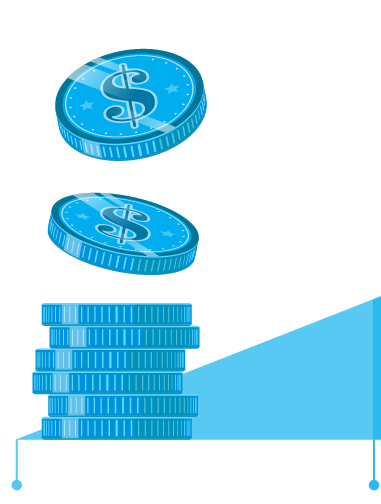The Every Child Fund
Flexible funds do the most good for children.
Flexible funds are UNICEF’s most important, most effective and most valuable tool to help children worldwide, because they’re able to be deployed when and where they’re needed most.
Yet, UNICEF’s flexible funding – its most powerful and effective tool – has fallen over the years and is currently at just 18 percent of UNICEF’s total revenue.
This shortfall threatens not only progress for children, but UNICEF’s ability to deliver on its mission.
Where flexible funds go
Flexible funds enable UNICEF to maintain its presence in 190 countries and territories. They form the backbone of UNICEF’s country office budgets, which each receive a yearly $850,000 minimum with additional funds made available based on need. This flexible funding helps UNICEF country offices make informed, real-time decisions about how to best address the needs of the children in their care.
Approx. 90% of UNICEF's flexible funds go to programs.
A question of fairness
In pursuit of a more equitable world for every child, UNICEF USA helps narrow funding gaps through the Equity Accelerator, an in-fund mechanism of the Every Child Fund, which speeds flexible funds proactively to overlooked communities and crises.
Six Ways UNICEF Puts Flexible Funds to Good Use
1 The first to respond, the last to leave in emergencies
Flexible funds allow UNICEF’s specialized staff to be on the ground before a crisis and equipped to respond immediately when one occurs. And when the emergency is over, flexible funds allow UNICEF to stay, helping communities rebuild and address long-term traumas.
Case in Point: Mozambique
2 Reaching unseen and neglected children
The sad truth is that some crises for children get a lot more attention than others. In fact, 90 percent of private sector humanitarian donations in 2022 went to fund just three emergencies — while UNICEF had to respond to more than 400. Right now, flexible funds are critical to helping millions of children survive out-of-the-spotlight food and drought crises, as well as outbreaks of diseases like cholera or measles that rarely make it into the headlines.
3 Working the UNICEF way
Working closely with governments, UNICEF’s approach focuses on building strong, sustainable systems that create enduring impact. It’s the difference between shipping vaccines and implementing a successful immunization program, or between trucking in water and helping a community build and adopt a safe water delivery system.
4 Helping children throughout their youth
UNICEF maintains a focus on giving every child, at every age, an equitable chance in life. Flexible funds enable better outcomes for children by providing long-lasting impact and a holistic continuum of support, not just one-time aid in a moment of need.
Care for Pregnant Mothers
Neonatal Care
Early Childhood Development and Nutrition
Education
Mental Health Services
5 Innovating and pioneering
Children right now are threatened by overlapping crises like climate change, extreme poverty and mass migration. Flexible funding is required to deliver the innovative solutions required to address them. Recent Research & Development funded by flexible funds has included everything from software to reunite children with their parents faster in emergencies to a high-performance tent that can resist high winds.
Case in Point:
UNICEF's High Performance Tent
UNICEF’s multipurpose tents are used in emergencies as health and nutrition centers, distribution points, temporary schools and child-friendly spaces.
- Proprietary design based on more than 1,000 field requirements
- Withstands both hot and cold climates
- Straight walls fit more people
- Improved air quality and ventilation
- Durable, repackable, reusable
- Solar and electric kits for uninterrupted power
6 Working "for every child"
UNICEF is unique among humanitarian and development organizations in its mandate, as laid out by the U.N. in 1989 via the Convention on the Rights of the Child. UNICEF’s mission is to serve the needs of all children, starting with the most vulnerable. It doesn’t get to choose its scope, or focus only on the children it thinks it can make the most impact on.
“UNICEF insists that the survival, protection and development of children are universal development imperatives that are integral to human progress. ”– UNICEF’s Mission Statement
In a Single Year
A quick glance at what UNICEF accomplishes with the help of flexible funding:
- Provides humanitarian assistance to millions of children and their families during crises.
- Vaccinates almost half the world’s children under 5 against deadly diseases.
- Supports education for 156 million children.
- Provides safe water and sanitation to 69 million people.
Supporting UNICEF means supporting the humanitarian organization that has helped save or meaningfully improve more young lives than any other in history.
Make a gift to UNICEF USA's Every Child Fund today.
Your support of the Every Child Fund allows UNICEF to continue progressing toward a world where all children can reach their full potential. Your gift of flexible funding makes it possible.


